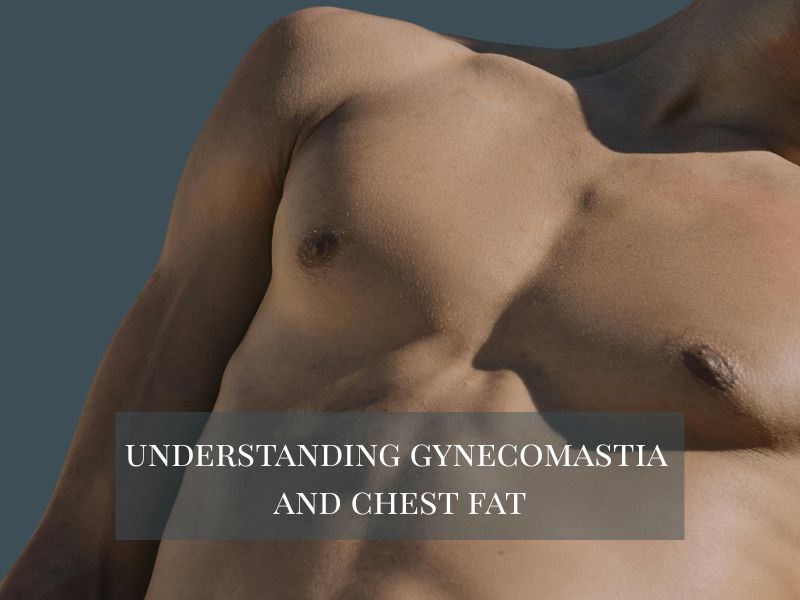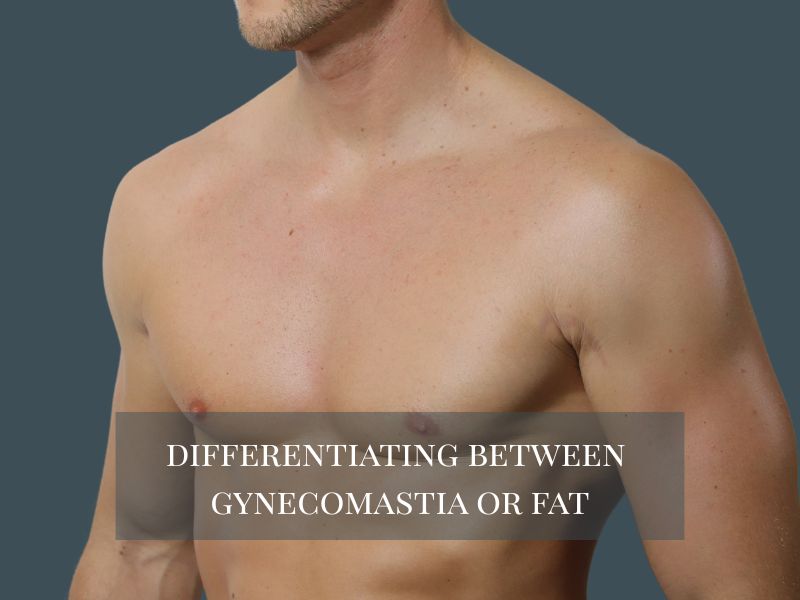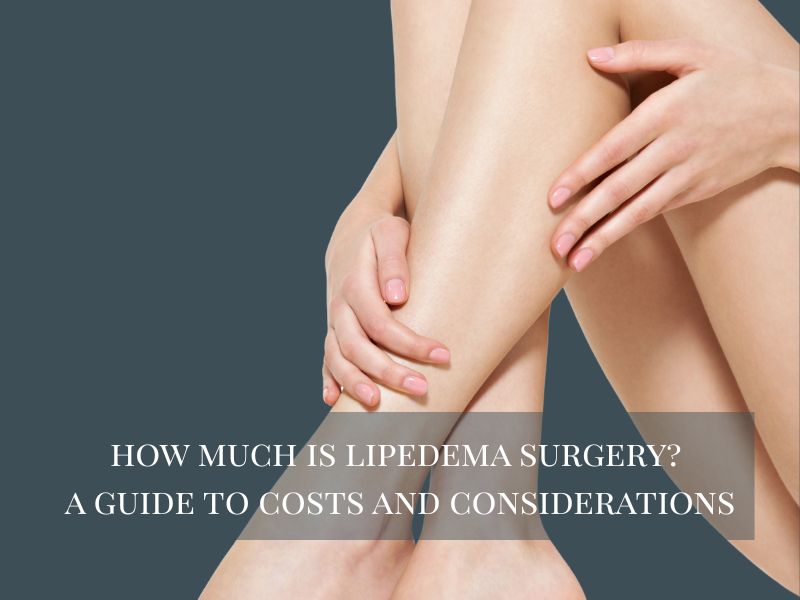Are you struggling to determine whether you’re dealing with chest fat or gynecomastia? It’s important to understand the difference because each condition stems from different causes and requires different approaches for treatment.
Many people often confuse gynecomastia with simply carrying extra fat around the chest area.
These misconceptions can lead to incorrect treatments that don’t work and can cause frustration. Getting an accurate diagnosis is one of the most important things you can do to determine what is causing your issue and ensure that you plan the right course of action.
Here, we’ll explore chest fat vs gynecomastia, helping you move forward with increased confidence.
Understanding Gynecomastia and chest Fat

Gynecomastia is a condition found in men that causes the enlargement of breast tissue. This leads to swelling in the chest that can feel firm, especially under the nipples. This isn’t just extra body fat, as some people mistakenly assume. Gynecomastia is actually a medical condition influenced by hormonal imbalances.
It is usually caused by an increase in estrogen or a decrease in testosterone, which disrupts the normal balance of hormones in your body.
Several different factors can cause you to have these hormonal shifts, including certain medications like anti-androgens, which are used for prostate enlargement, anabolic steroids, and some anti-anxiety drugs.
Medical conditions that impact the liver, kidneys, or thyroid can also cause gynecomastia by altering your body’s hormone production.
It’s very important to determine whether you’re dealing with gynecomastia or just excess chest fat because the treatments for these conditions are very different. Understanding the root cause of your issue is the first step toward finding the right treatment solution.
Fat Accumulation in the Chest
Excess fat accumulating in the chest area is a common concern for many men, and it often gets mistaken for gynecomastia. However, unlike gynecomastia, which is a hormonal condition affecting breast tissue, fat accumulation is simply an increase in fat deposits that can affect anyone, regardless of their health conditions.
This type of fat build-up is usually more visible in people with a higher amount of body fat.
Lifestyle factors play a significant role in the development of chest fat. A poor diet, lack of exercise, and overall weight gain can contribute to fat build-up in specific body areas, including the chest.
Addressing these lifestyle factors by eating healthier and implementing a regular fitness routine can help you minimize the appearance of chest fat and reach your individual health goals.
Differentiating Between Gynecomastia or Fat

Determining whether you have gynecomastia or fat can be tricky without the help of a medical professional. Still, it is essential in order to determine the best treatment option for you. If you’re trying to figure out whether you’re dealing with gynecomastia or fat, start by feeling the excess chest tissue.
Gynecomastia is usually a firm, rubbery mass extending outward from the nipples. Chest fat, on the other hand, is usually much softer.
Your doctor will perform a detailed physical assessment, checking for firmness and symmetry of breast tissue and any signs of tenderness that might suggest gynecomastia. They may also recommend medical tests such as ultrasounds or mammograms to examine the excess glandular tissue more closely.
In some cases, blood tests might be necessary to evaluate hormone levels, which will help confirm if hormonal imbalance contribute to male breast tissue growth.
gynecomastia vs Chest fat Frequently Asked Questions
What causes gynecomastia, and is it different from regular chest fat?
Gynecomastia is caused by hormonal imbalances that lead to the growth of glandular breast tissue, not just fat. This differs from chest fat, which is softer in texture and results from overall weight gain.
How can I determine if I have gynecomastia, and what treatment options are available?
To determine your gynecomastia, consult a healthcare professional for a physical exam and imaging tests. Gynecomastia treatment options may include medication to address hormonal imbalances or a male breast reduction surgery to remove excess breast tissue.
Can lifestyle changes help reduce chest fat without surgery or medical intervention?
Yes, lifestyle changes such as maintaining a healthy diet, engaging in regular cardiovascular and strength-training exercises, and losing body weight can help reduce chest fat without gynecomastia surgery.
Chest fat responds well to these efforts, often leading to noticeable improvements. However, in some cases, significant weight loss may result in a saggy or droopy appearance of the chest due to excess skin.
While most chest fat can be managed with lifestyle adjustments, severe cases of gynecomastia with persistent glandular tissue may still require gyno removal surgery for optimal results.
What are the treatment options for excess fat tissue in one or both breasts?
Gynecomastia is caused by excessive glandular tissue and can affect one or both breasts, often resulting in firm or rubbery excess tissue beneath the nipple area. In contrast, chest fat is simply an accumulation of fatty tissue and feels softer and more diffuse.
While chest fat can often be reduced with diet and exercise, true gynecomastia usually requires surgical treatment to remove the excess fatty tissue for lasting results.
When should you consider male breast reduction for excess breast tissue?
If you notice persistent excess breast tissue in one or both breasts that doesn’t respond to reducing overall body fat, it may be gynecomastia. In comparison, chest fat feels soft, while gynecomastia is characterized by firm, dense glandular tissue beneath the nipple area. In such cases, gynecomastia surgery (male breast reduction) can provide a more permanent solution.
What is the cause of gynecomastia?
Gynecomastia can result from an imbalance between estrogen and testosterone, and is often triggered by certain medications: including antidepressants, antibiotics, chemotherapy, prostate cancer drugs, ulcer or cardiovascular medicines, as well as illegal drugs like anabolic steroids, heroin, or marijuana.
Treating gynecomastia typically involves stopping the causative medication or drug if possible, addressing any underlying health conditions, and, if the condition persists or causes significant discomfort, considering medical or surgical intervention for lasting improvement.
What factors affect gyno removal surgery cost?
Gyno removal surgery, or male chest reduction, targets excess breast tissue caused by enlarged breast glands and, if needed, removes excess skin for a flatter upper body.
The cost typically ranges from $4,000 to $10,000, depending on the amount of excess tissue, whether both breasts are involved, and the complexity of the case.
While weight loss can lead to at least some reduction in chest size, true gynecomastia with persistent glandular tissue usually requires surgical treatment for lasting results.
Schedule Your Gynecomastia or Chest Fat Consultation with Aesthera Plastic Surgery
Understanding the difference between gynecomastia or chest fat is very important for choosing the right treatment options. While lifestyle changes and diet can often decrease chest fat, gynecomastia caused by hormonal imbalances can require surgical interventions.
Each condition has its own treatment strategies, and a proper diagnosis is essential to determine the most effective approach for you.
If you’re unsure about the cause of your chest enlargement, don’t hesitate to seek professional help. Schedule a consultation with a board certified plastic surgeon Dr. CV Chegireddy at Aesthera Plastic Surgery, who will provide you with a personalized evaluation and discuss the best treatment options for your situation. Let us help you regain confidence in your appearance!



